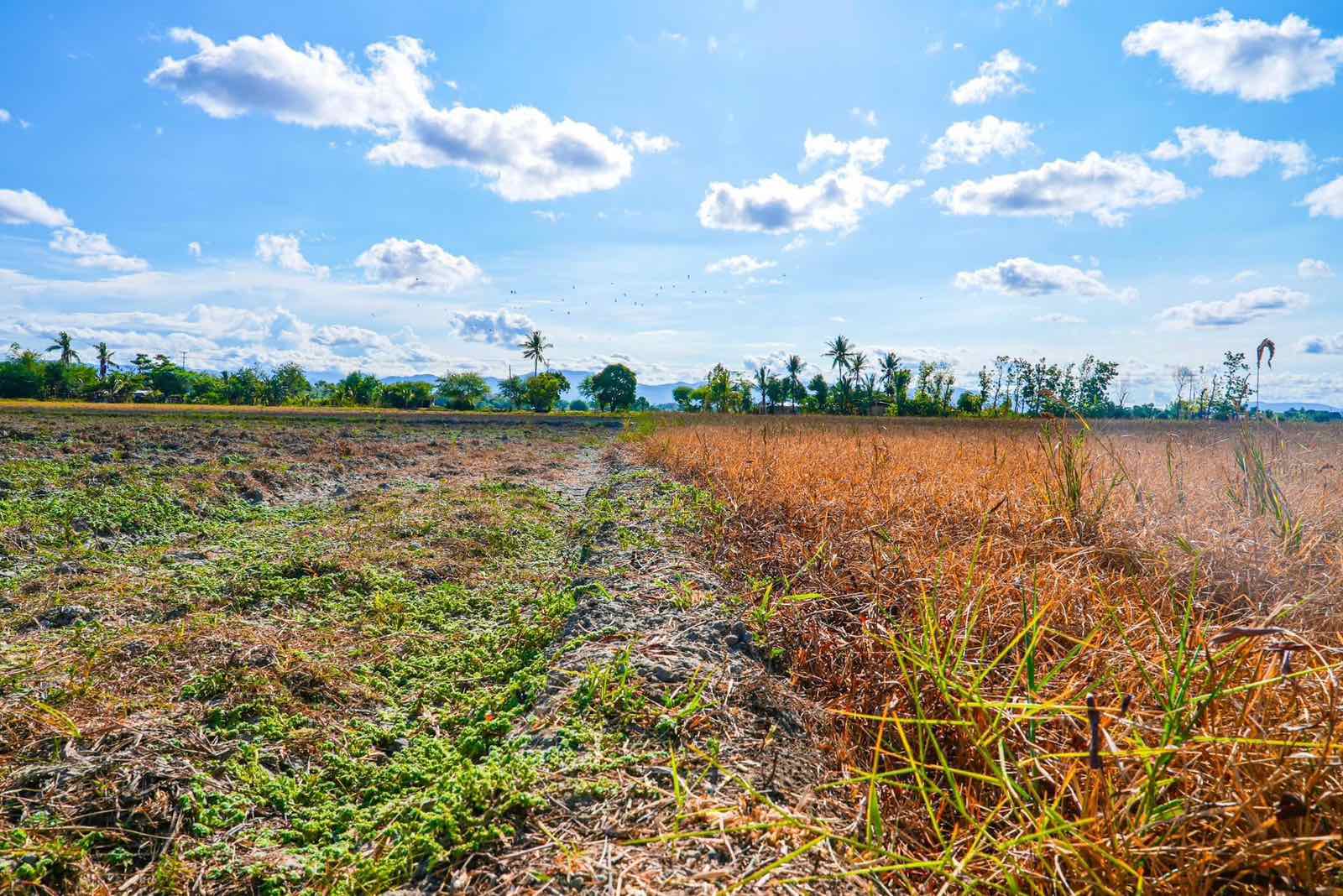El Niño not yet at its tail end; but will dissipate in May, says TF spox
By Raymund Antonio and Raymund Antonio
The impact of the El Niño phenomenon, which brings extreme heat and drought to the country, may ease up by the end of May, the Task Force El Niño said on Wednesday, April 24.
 Dry spell and drought brought about by El Niño continue to ravage a farmland in Occidental Mindoro (Photo from the Presidential Communications Office)
Dry spell and drought brought about by El Niño continue to ravage a farmland in Occidental Mindoro (Photo from the Presidential Communications Office)
Task Force El Niño spokesperson Joey Villarama, however, stressed that the country is not yet in the “tail end” of El Niño.
“Hindi ko sinasabi na patapos na ang epekto ng El Niño or nasa tail end na tayo sa epekto ng El Niño dahil ngayon po nararanasan pa po natin iyong matindiing init. So, konting tiis pa tayo (I am not saying that the effect of El Niño is ending or we are in its tail end because we can still feel the extreme heat. So, let’s bear it a little more),” he said.
“By end of May, we hope that magdi-dissipate o magiging less na ang impact ng El Niño sa ating bansa (it dissipates or the impact of El Niño lessens in our country),” he added.
But despite hopes that El Niño’s impact will decrease by next month, Villarama urged the public to continue conserving water and energy.
“Pero nandoon pa rin ang panawagan lalo na sa ating resources gaya ng kuryente at tubig na sama-sama pa rin tayong magtipid (But the call is still there for us to conserve our resources, especially electricity and water),” he said.
The official shared that even when President Marcos visited Occidental Mindoro on Tuesday, April 23, his “primary concern” was to do field inspection with the Cabinet secretaries because of the lack of water.
“Tubig talaga. Hindi natin ma-magic ang tubig (It’s really water. We cannot magic water),” he added as he emphasized the need for short-, medium-, and long-term solutions to irrigation problems.
During his visit to Occidental Mindoro on Tuesday, the President instructed the National Irrigation Administration (NIA) to put up irrigation systems to cover several municipalities in the province, particularly in the municipalities of San Jose and Magsaysay, to boost agricultural production.
But aside from irrigation water from dams, Marcos said the government will also provide the farmers solar-powered pumps to irrigate hard-to-reach upland areas.
Even with the complete provision of fertilizer, pesticides, farm equipment, and other inputs, optimum output can’t be achieved without sufficient water supply, the Chief Executive noted.
He also shared that the government is looking at connecting Mindoro’s two provinces to the grid through a submarine cable as a long-term solution to their electricity supply concerns.
Other solutions identified by the government is the use of solar, wind, hydro, and geothermal power as sources of energy.